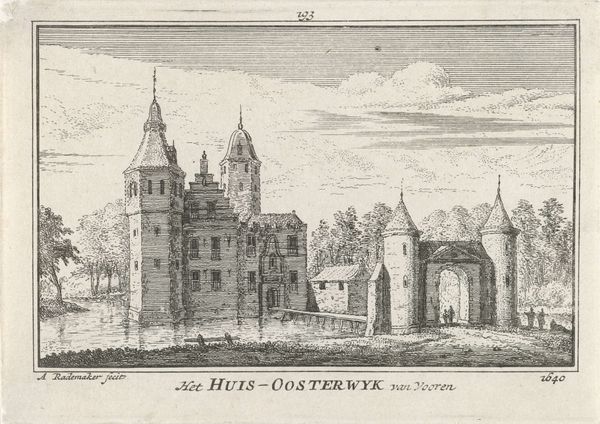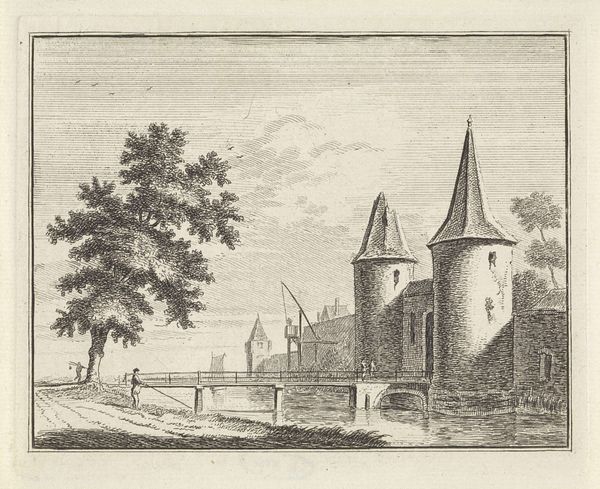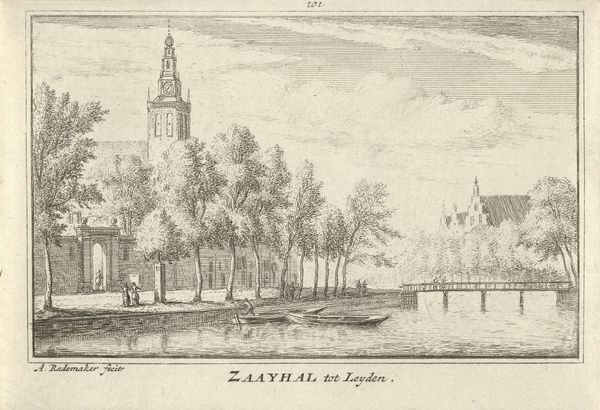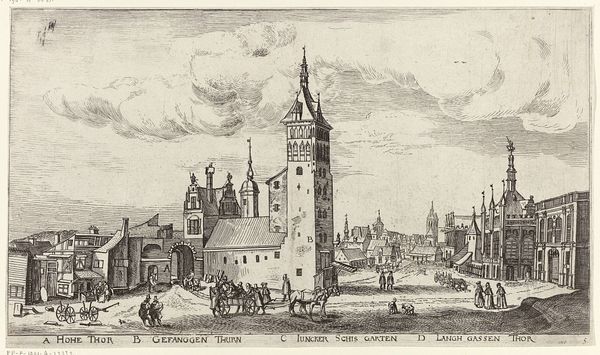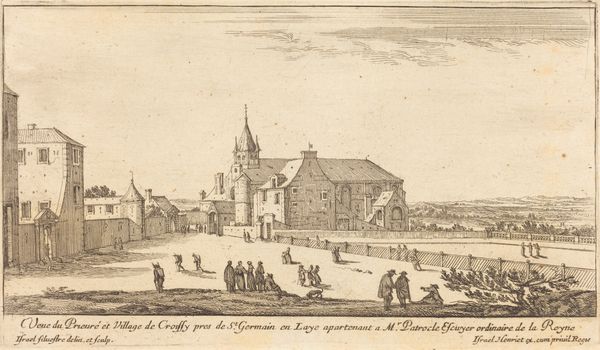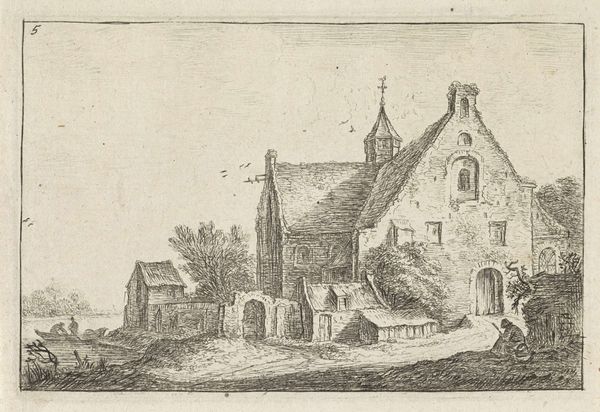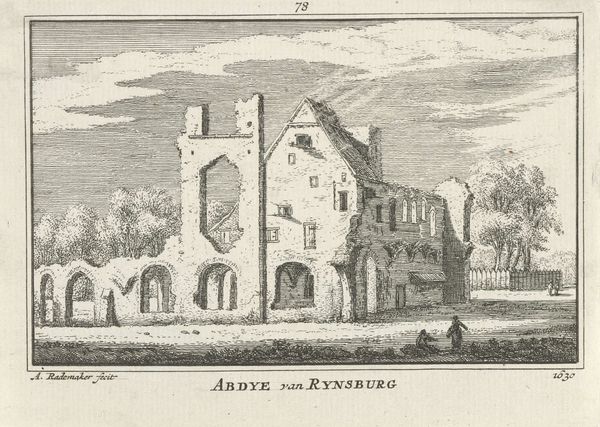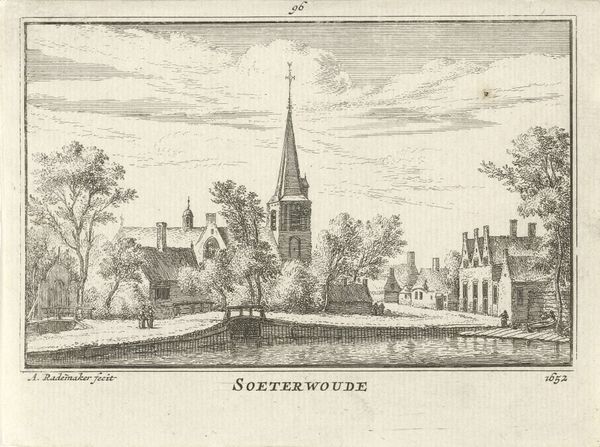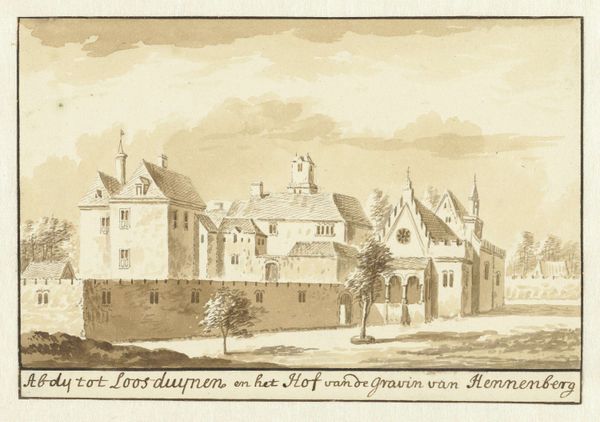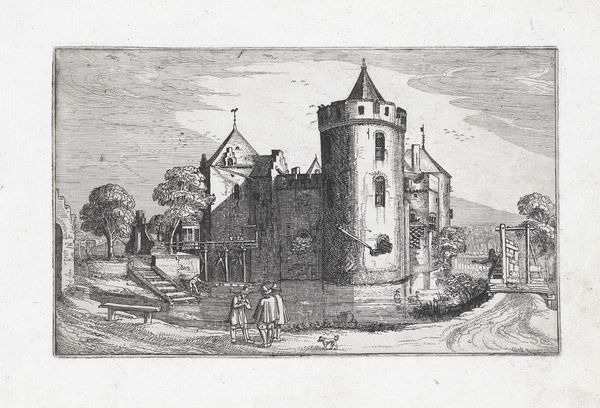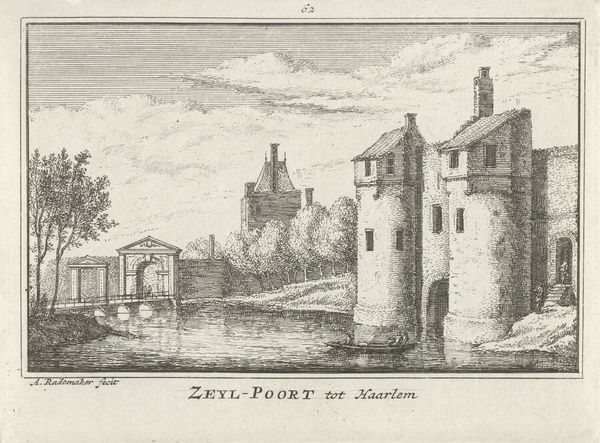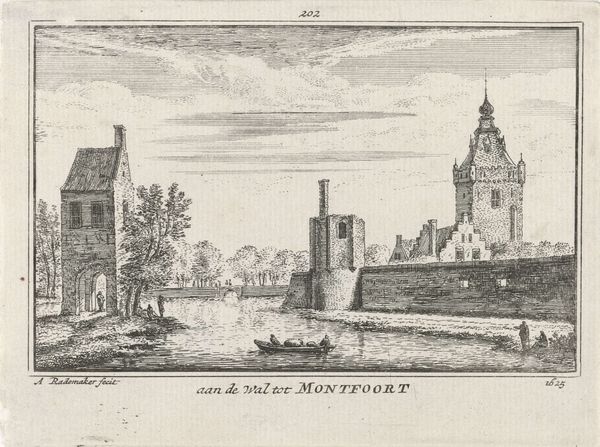
drawing, print, etching, engraving, architecture
#
architectural sketch
#
drawing
#
aged paper
#
quirky sketch
#
baroque
#
mechanical pen drawing
# print
#
etching
#
old engraving style
#
landscape
#
personal sketchbook
#
idea generation sketch
#
sketchwork
#
pen-ink sketch
#
pen work
#
engraving
#
architecture
Dimensions: height 80 mm, width 115 mm
Copyright: Rijks Museum: Open Domain
Editor: Here we have Abraham Rademaker's etching, "Kasteel Zuydwijk," created sometime between 1727 and 1733. It's quite delicate and precise. What strikes me most is the castle's isolation, surrounded by water. What do you see in this piece that perhaps I'm missing? Curator: The isolation you perceive is key. Consider water, universally a symbol of purification, separation, but also a life source. By encircling the castle, does the water protect or imprison? What message might that visual paradox hold about power and privilege? Editor: That’s fascinating. I hadn’t thought about the water having that kind of double meaning. So the artist is using a common symbol to make a statement about... about what, exactly? Curator: Look at the people in the foreground, rendered quite small compared to the imposing structure. Observe how they gesture towards the castle as if presenting it. Could they represent the local population and their relationship to the lords within? Are they welcoming, wary, or resigned? These recurring themes offer ways of encoding social hierarchies. Editor: So Rademaker isn’t just drawing a building; he’s using the architecture and figures to convey power dynamics? It’s like he's telling a silent story. Curator: Exactly. Think of baroque art as theatrical. The symbols in the art remind the viewers about the underlying truths and power structures of the society. Do the image and style evoke authority, reverence, or both? Editor: I never thought I could look at an old architectural print and see so much more than just lines on paper. Thanks for untangling those visual cues! Curator: The visual language of any artwork reflects not only the maker’s vision but also the enduring dialogue between art, culture, and society. It reveals truths, intentional or otherwise.
Comments
No comments
Be the first to comment and join the conversation on the ultimate creative platform.

